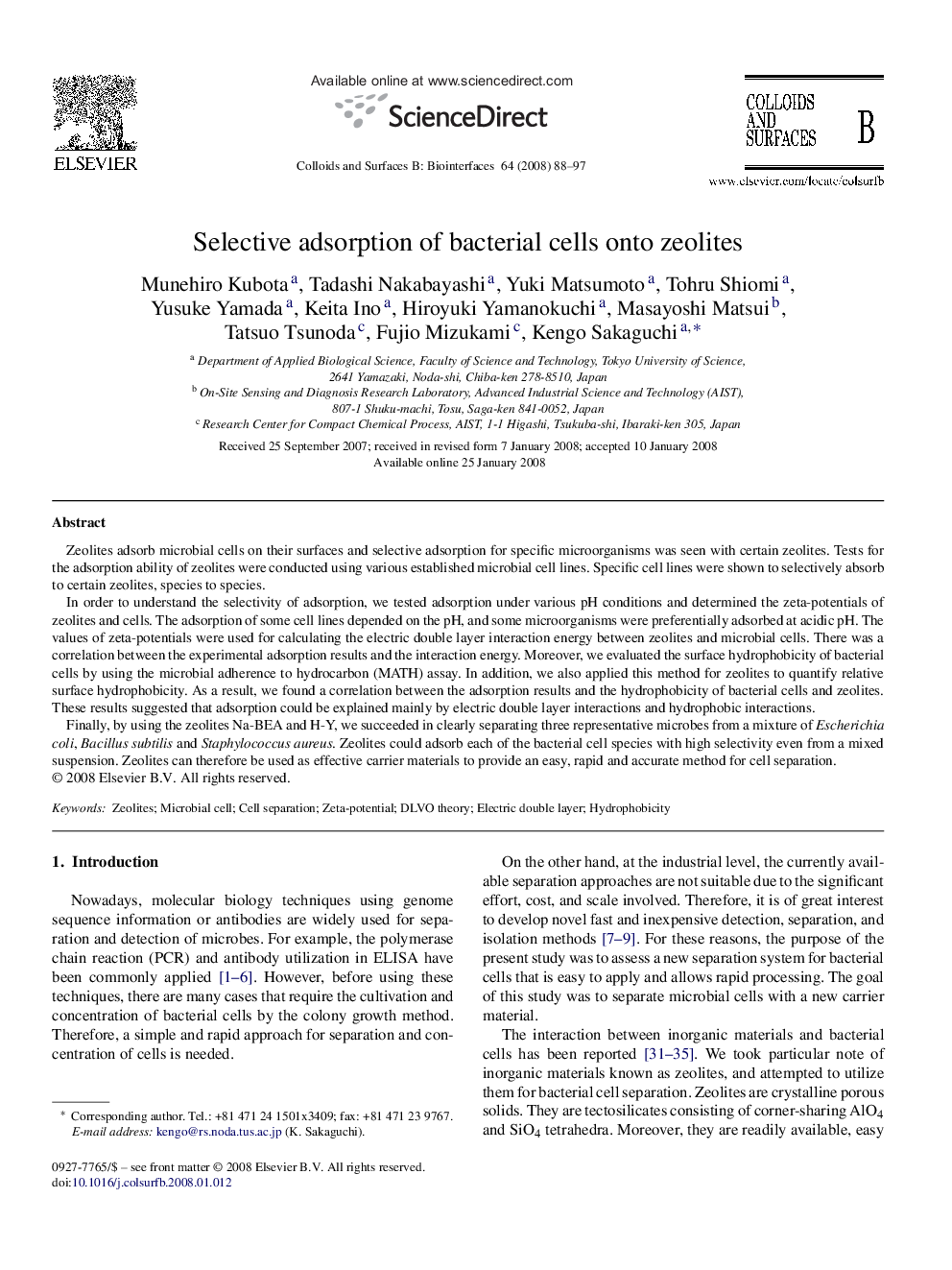| Article ID | Journal | Published Year | Pages | File Type |
|---|---|---|---|---|
| 602187 | Colloids and Surfaces B: Biointerfaces | 2008 | 10 Pages |
Zeolites adsorb microbial cells on their surfaces and selective adsorption for specific microorganisms was seen with certain zeolites. Tests for the adsorption ability of zeolites were conducted using various established microbial cell lines. Specific cell lines were shown to selectively absorb to certain zeolites, species to species.In order to understand the selectivity of adsorption, we tested adsorption under various pH conditions and determined the zeta-potentials of zeolites and cells. The adsorption of some cell lines depended on the pH, and some microorganisms were preferentially adsorbed at acidic pH. The values of zeta-potentials were used for calculating the electric double layer interaction energy between zeolites and microbial cells. There was a correlation between the experimental adsorption results and the interaction energy. Moreover, we evaluated the surface hydrophobicity of bacterial cells by using the microbial adherence to hydrocarbon (MATH) assay. In addition, we also applied this method for zeolites to quantify relative surface hydrophobicity. As a result, we found a correlation between the adsorption results and the hydrophobicity of bacterial cells and zeolites. These results suggested that adsorption could be explained mainly by electric double layer interactions and hydrophobic interactions.Finally, by using the zeolites Na-BEA and H-Y, we succeeded in clearly separating three representative microbes from a mixture of Escherichia coli, Bacillus subtilis and Staphylococcus aureus. Zeolites could adsorb each of the bacterial cell species with high selectivity even from a mixed suspension. Zeolites can therefore be used as effective carrier materials to provide an easy, rapid and accurate method for cell separation.
